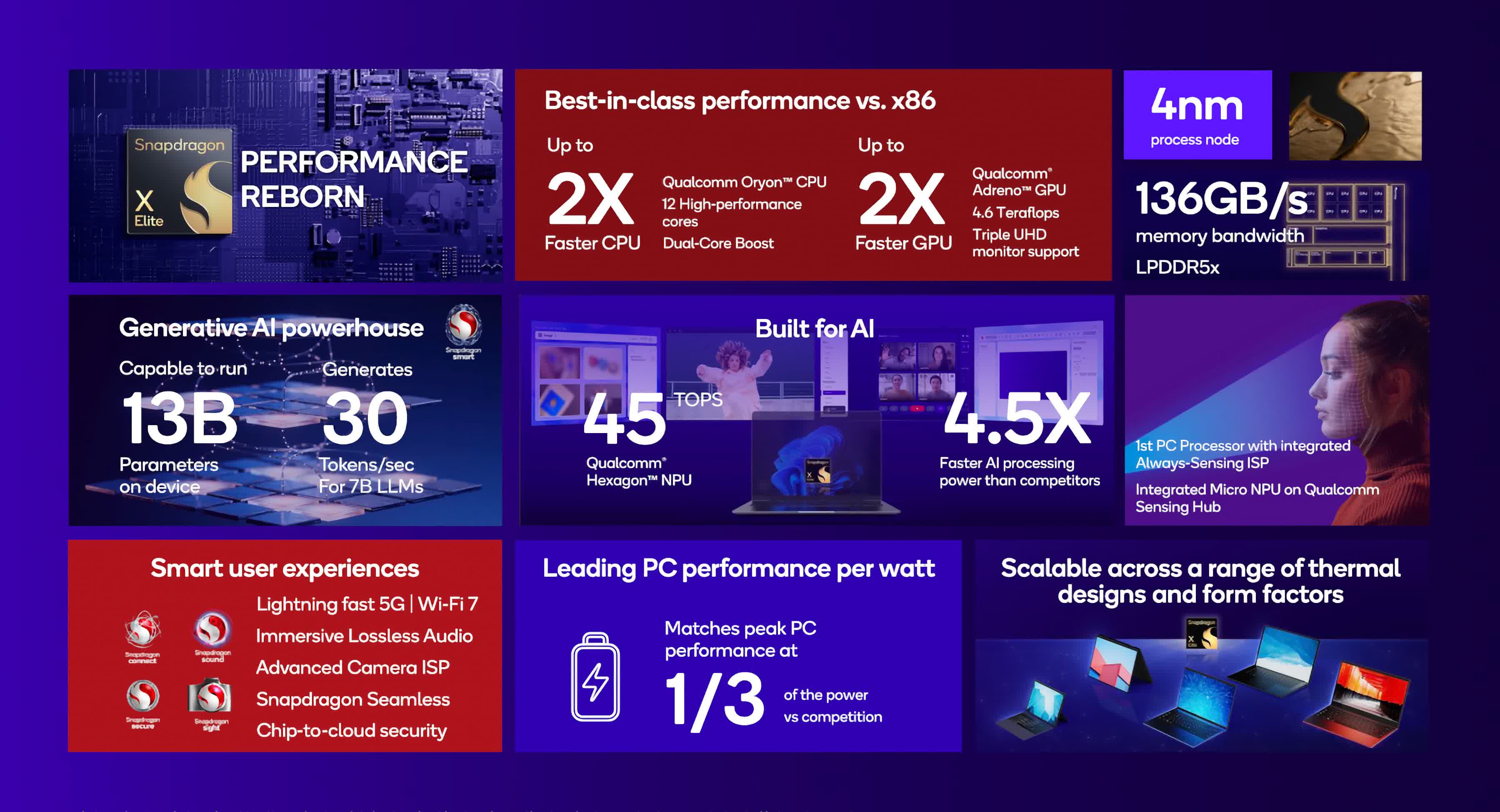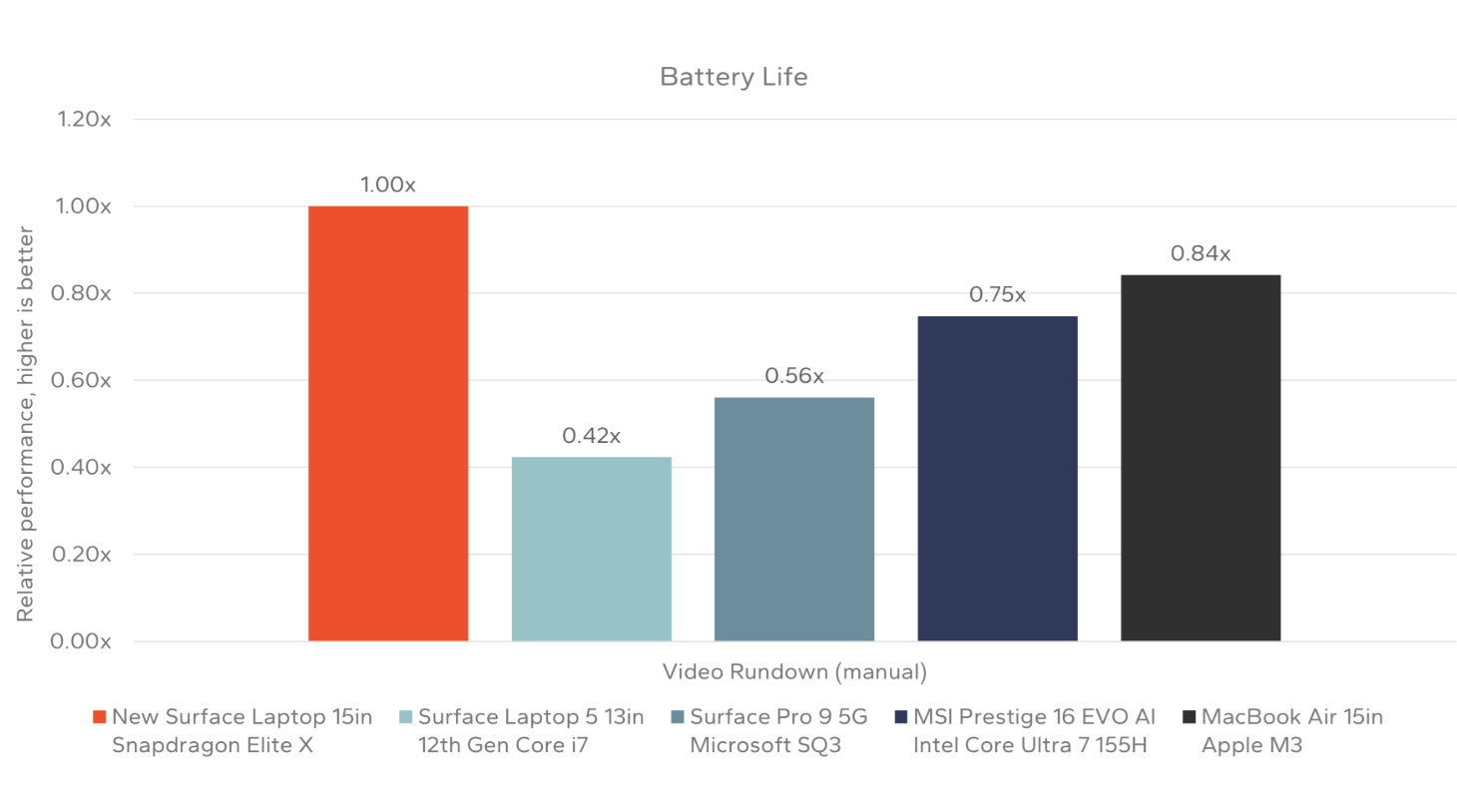A hot potato: The announcement of the Microsoft/Qualcomm Arm-based PCs has been hailed by some as the start of a serious challenge to x86 processors' dominance. Not surprisingly, one person who believes a revolution is coming is Arm CEO Rene Haas, who thinks Arm-based chips will be powering more than 50% of Windows PCs by 2029.
Microsoft last month announced the Copilot+ AI PCs packing Qualcomm's Arm-based Snapdragon X Elite and Snapdragon X Plus SoCs. Microsoft says the Snapdragon X Elite-powered latest Surface laptop is up to 58% faster than Apple's M3 MacBook Air while offering excellent battery life, and early tests appear to confirm this – though they were paid for by Microsoft.
Windows-on-Arm PCs have been around for a while now, but the latest Snapdragon chips, which are comparable to high-end x86 CPUs, are getting plenty of attention.
In an interview with Reuters, Haas said, "Arm's market share in Windows - I think, truly, in the next five years, it could be better than 50%."
Haas added that Microsoft is very committed to Arm from a software standpoint and has gone well beyond anything it has done previously with Arm over the last couple of years.
The Arm-based Copilot+ PCs from Microsoft and other vendors are focused on consumer laptops, though Qualcomm is offering a Windows Snapdragon X dev kit in the form of a NUC-like mini desktop. Furthermore, Qualcomm CEO Cristiano Amon said at Computex that the Snapdragon X Elite and X Plus chips were coming to all form factors, suggesting future desktops powered by the SoCs. It seems Haas' prediction likely covers both laptop and desktop Windows PCs.
The new wave of Arm-based PCs is exciting, and Microsoft has gained the support of big manufacturers such as Dell, HP, Acer, Asus, Samsung, and Lenovo, but seeing x86 PCs fall below a 50% market share in just five years seems like a very optimistic forecast.
Canalys analyst Kieren Jessop told The Register that just 8 – 10% of quarterly PC shipments today are Arm-based, and almost all of those are Apple Silicon. The analyst predicts 30% of the PC market will be Arm-based by 2026, and the only way that number would be higher in a five-year time frame would be in the unlikely event of Intel introducing its own Arm chip.
Intel and AMD have just announced their AI-focused Lunar Lake and Ryzen AI 300 CPUs, respectively, as the two big x86 players try to take the spotlight off the Snapdragon chips, offering what they claim is similar or better performance than Qualcomm's offerings.
Arm CEO: 50% of Windows PCs will be powered by Arm chips by 2029

